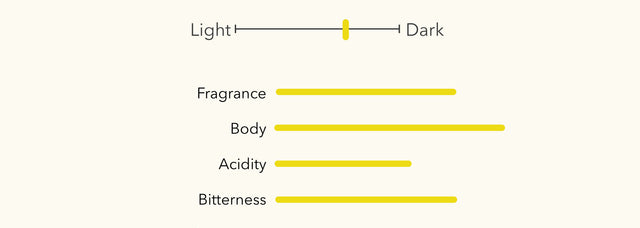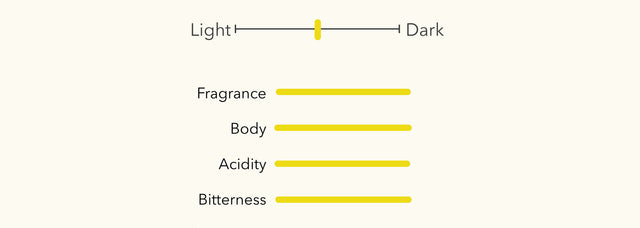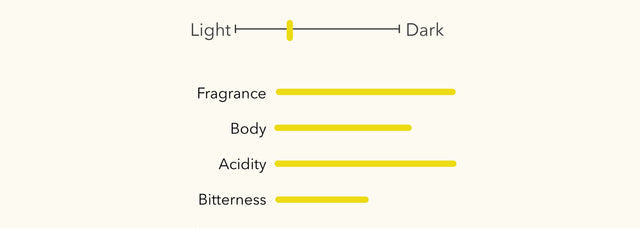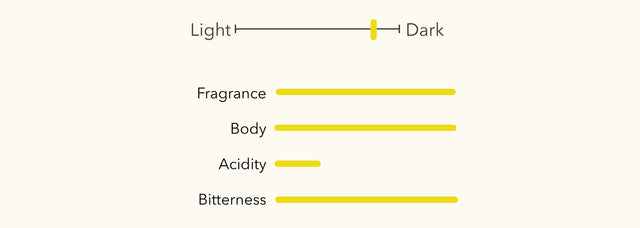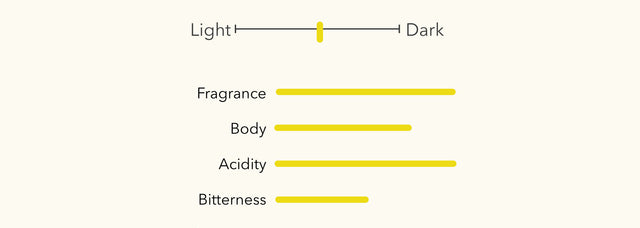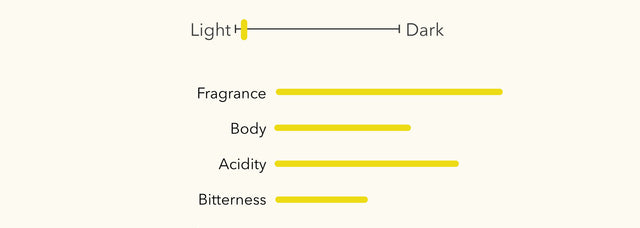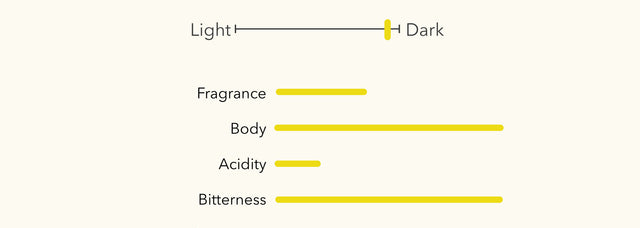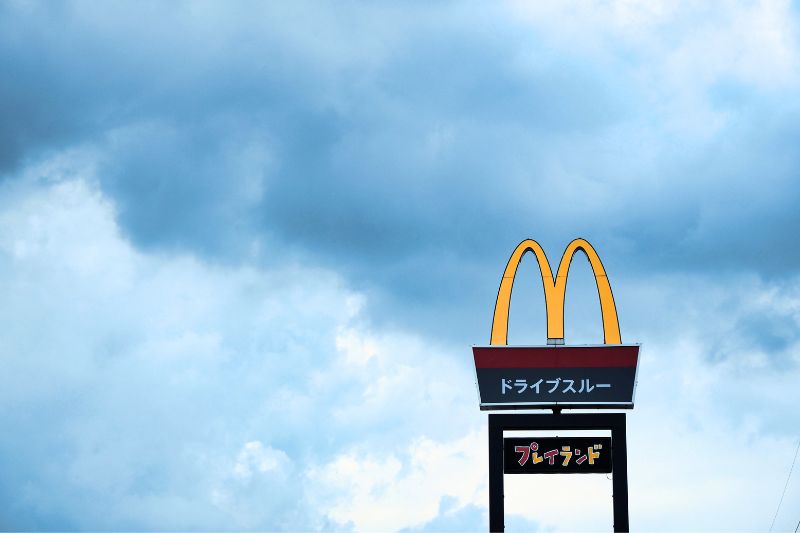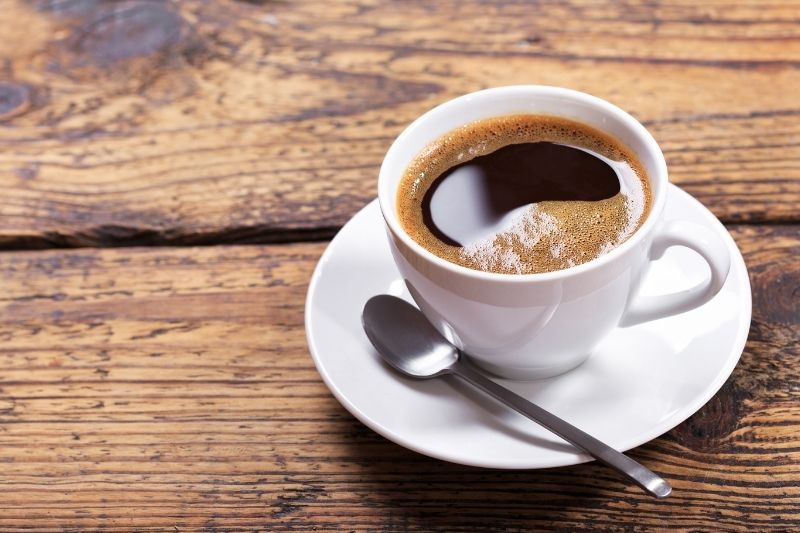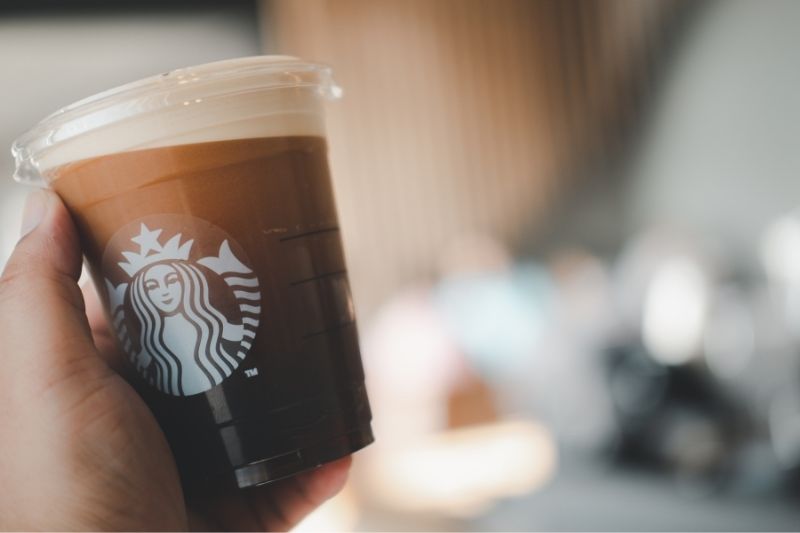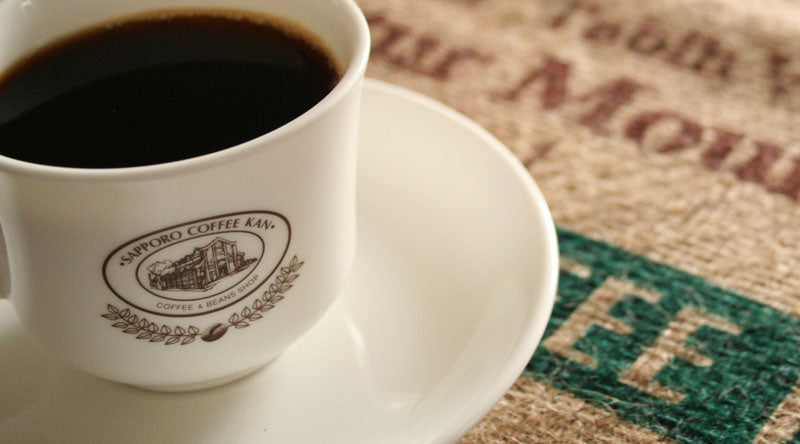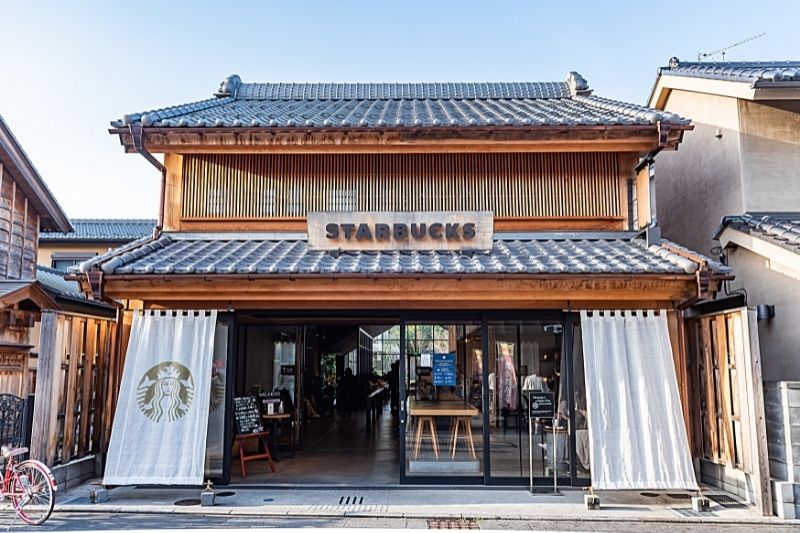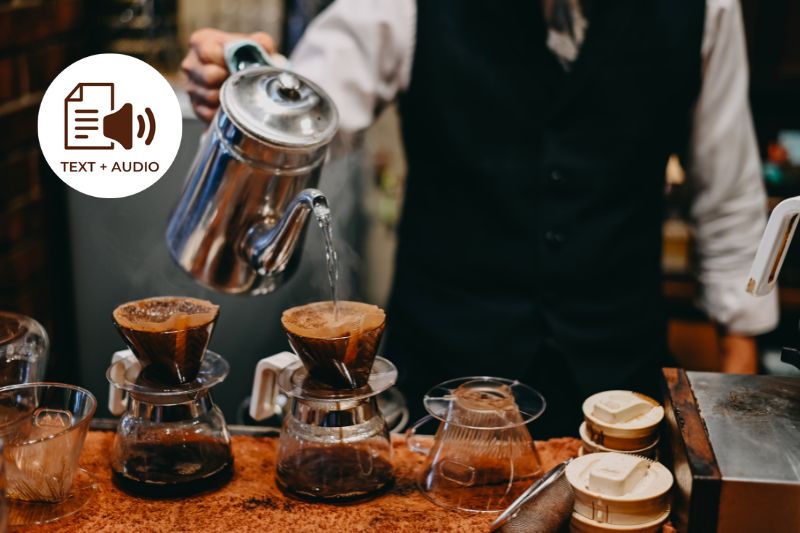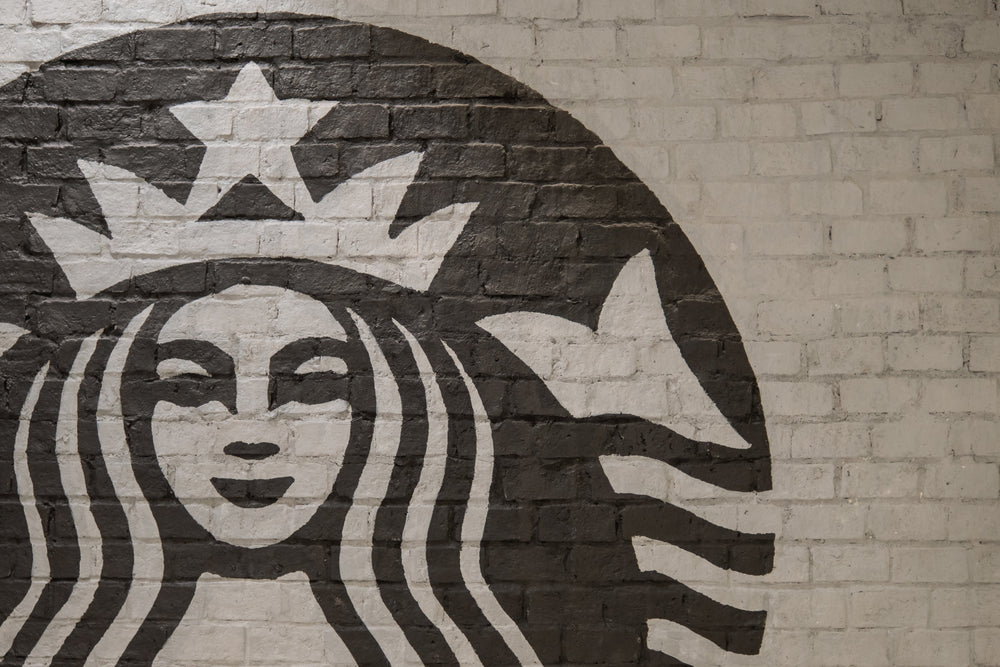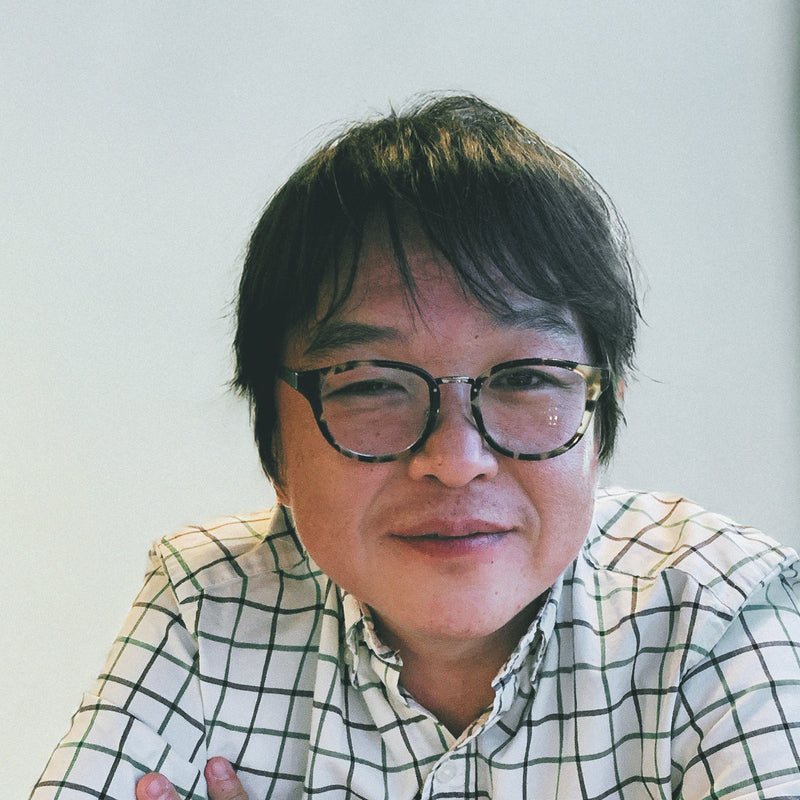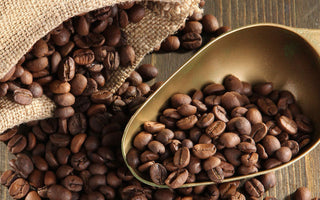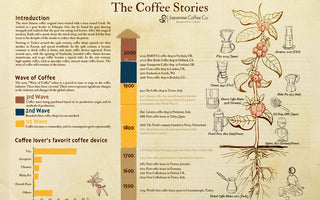Today, we are going to take a look at two coffee companies that are both very dear to my heart: Starbucks and Sapporo Coffee Kan. Looking at the title, 'Starbucks vs. Sapporo Coffee Kan,' you might be thinking it is a battle between the two, written in a full-on debate mode. But it is not that at all!
We surely will take a contrasting look at different aspects of both of these companies, but I love both of these companies equally. As many of you might already be aware, I love Starbucks and have fond childhood memories about Starbucks. On the other hand, Japanese Coffee Company strives to share the exceptional Japanese Sumiyaki Coffee from Sapporo Coffee Kan with my coffee-loving friends worldwide; if I did not love and trust this company, I would not confidently share it with my friends in the first place.

I am so excited to share the things that I love and respect about each of these companies with all of you. I hope that knowing these facts about Starbucks and Sapporo Coffee Kan will help you enjoy the physical aspects and the intangible goodness and meaning behind each cup of coffee from both of these companies.
- How the companies came to be – stories of passion and dedication
- Values and visions of the companies
- About their coffees
- Products with Unique and Original Ideas
- Locations, atmosphere, and interiors of the
How the companies came to be – stories of passion and dedication
Starbucks
If you are lost in any major city and are craving a cup of coffee, you are probably subconsciously looking for a spherical, green mermaid – yes, that's right, the siren logo of Starbucks. Because Starbucks is so widely recognized, it has become a part of our collective subconscious as being synonymous with reliable, good coffee, friendly customer service, and comfortable space.
It is the biggest coffee company globally, with more than 32,000 stores spread across 83 countries and more than 340,000 employees! Starbucks is involved in many different activities of the coffee industry - roasting, blending, brewing, serving, researching, educating – you name it, Starbucks does it all and does it well.
Starbucks was founded by three partners in 1971. The original Starbucks store located in the Pike Place area of Seattle was not for serving coffee but rather a place where the coffee enthusiasts of Seattle could come and buy roasted coffee beans. Starbucks took its current form of a ‘third place’ for enjoying coffee much later during the 1980s when Starbucks was sold to Howard Schultz. On his trip to Milan in 1983, Howard Schultz was moved by the lively coffee culture in Piazza Del Duomo, where people of all ages enjoyed coffee together, creating memories and deep connections. He was determined to bring this back to Seattle through Starbucks by turning it from a coffee selling company to a coffee company built around people. Since then, there has been no turning back. Still today, Starbucks keeps on growing through coffee and the people it brings together as a community.

Sapporo Coffee Kan
Sapporo is the main city in Hokkaido, the northernmost region of Japan. Hokkaido is abundant in nature, full of lakes, mountains, forests, and valleys, offering some of the richest ecosystems in the world. Hokkaido is famous for producing high-quality agricultural and marine products thanks to this natural abundance and fertile soil.

Sapporo Coffee Kan started its journey in March 1982 as a wholesale retailer of Coffee and tea-related products in Chuo (central) ward of Sapporo city. By 1984, the business had already flourished, and they started full-scale production of charcoal roasted coffee by installing a 20-lb charcoal coffee roasting machine.
In 1990, Sapporo Coffee Kan started providing a service that was quite rare at that time – delivering freshly roasted coffee beans to offices. This "Office Coffee Service," which is still going on strong after all these years, also provides coffee machines and coffee brewing equipment delivery to offices so that people can enjoy specialty coffee at their workplace.
In 1986, Sapporo Coffee Kan opened its first café in Sapporo's Nishi (west) ward with the interiors, welcoming hospitality, and an ambiance that matches the Japanese premium specialty coffee. Since then, it has quickly become one of the most popular cafes in Sapporo city.
Since 2003, the second generation President of the company has been traveling worldwide to find the best coffee beans. This has led to Sapporo Coffee Kan signing various exclusive farm contracts with the best coffee-growing regions in the world: Brazil San Conrad Farm (2003), Tabih village of Mount Batur region in Bali (2008), and Mandheling Berkat Lintong in Indonesia (2011).
Today, Sapporo Coffee Kan has ten outlets in Japan, including one in Tokyo. People come from afar to have a taste of their hand-brewed specialty coffee at their quaint coffee shops and to buy the Sumiyaki charcoal coffee beans. It also ships coffee beans worldwide through Japanese Coffee Co.
Values and visions of the companies
Starbucks
We all know about Starbucks to be a coffee company, but you might be surprised to know that it is actually not, and I mean this in a good way; it is instead a people's company built through coffee. According to Howard Schultz, CEO of Starbucks, “We’re in the people business serving coffee, not the coffee business serving people.” And Howard Behar, who has served as an executive at Starbucks for many years, even wrote a book titled “It’s not about the coffee,” where he shares the importance Starbucks places on people – both customers and employees.

Starbucks has four core values at the center of all of its activities:
-
Creating a culture of inclusion and diversity: This is very apparent in their employment policies and endless efforts to create a workplace where everyone feels welcomed, empowered, and 'heard'. A great example of this is the opening of Starbucks sign language stores operated by deaf and hard of hearing partners.
-
To act with courage: To be a revolutionary company, it has to go against the grain, take bold decisions, and take challenging steps which might be seen as risky by most. Starbucks has never been scared to create innovative products, face challenges, and always push beyond the limits. For example, it has taken the bold step to expand its business in China through its Starbucks China Coffee Innovation Park.
-
To be present: Instead of being passive, Starbucks is always proactive and up to date to cater to the changing needs of society. It is always aware of what is going on in the current world. For example, Starbucks has taken many initiatives to tackle environmental issues, such as eliminating plastic straws in all of its stores.
-
To deliver the best: Starbucks is never content in terms of improvement. It is always looking for places to push the boundaries further and bring something better to its customers.
All the operations carried out by Starbucks strive to stay true to its mission statement – “To inspire and nurture the human spirit – one person, one cup and one neighborhood at a time.”
Sapporo Coffee Kan
The foundation upon which Sapporo Coffee Kan is built is to serve specialty coffee of genuinely exceptional quality to as many people as possible. Not mediocre coffee masked by milk and cream and flavors, not an 'okay' coffee that is somehow made acceptable by delicious food; no, no. At Sapporo Coffee Kan, coffee takes center stage, the spotlight, and utmost detail. Here, the coffee is the protagonist, not a side character. If you want to enjoy the unique taste and flavor of a specific coffee bean that comes from each coffee bean's unique origins, then this is the place to be.
Right from the very beginning, the founder Eiichi Ito has emphasized the importance of keeping the innate characteristics of the coffee beans intact. The company is highly committed to this core policy even to this day and strives hard to keep even the subtlest of flavors of the precious coffee beans alive in the final cup of coffee. This is why Sapporo Coffee Kan makes exclusive farm contracts with coffee farming families and villages instead of importing beans from giant coffee estates. Then the coffee is roasted using CSR (Charcoal Straight Method) and then manually brewed using the Nel drip method.
Another essential aspect of Sapporo Coffee Kan’s vision is to make great coffee accessible to as many people as possible. This is why it has created its special Premium Decaf coffee using a special decaffeination method that protects the coffee beans' originality. This coffee can be safely consumed by coffee lovers who are not good with caffeine, such as pregnant and breastfeeding ladies. Also, Sapporo coffee Kan’s multiple coffee bean shops and cafes bring truly great coffee to countless coffee lovers in Japan. Now Sapporo Coffee Kan is on a journey to make this coffee reach people outside Japan through our Japanese Coffee Co.
Sapporo Coffee Kan has also played a vital role in spreading the coffee culture and coffee knowledge to the general public. Even as early as 1989, when the world has not yet fully become aware of the 'third-wave coffee boom,' it has opened a place to celebrate the culture and lifestyle related to coffee. A large site which used to be Hokkaido Industrial Research Institute during the Showa era, was converted to a coffee hub consisting of a coffee beans shop, roasting room, café, culture room, distribution center, and office rooms. People could come here and immerse themselves in everything related to specialty coffee.
About their coffees
One of the very first questions that we ask regarding a coffee company is 'How is their coffee?' This is exactly what we will look at in this section.
Sapporo Coffee Kan
Coffee beans and roasting
Sapporo Coffee Kan’s beans are carefully selected from the best regions of the world that have the optimum conditions in terms of nature and climate for growing delicious coffees, such as volcanic soil, high altitude, nutrient-rich soil, and abundant water supply. In addition, Sapporo Coffee Kan has exclusive contract farms (for example, San Conrad farm of Brazil’s Cerrado area), which ensures that the coffee beans are processed and treated best to retain the original characteristics of the beans.

To give you a quick idea of the level of quality of the beans used at Sapporo Coffee Kan, one of Sapporo Coffee kan’s coffee beans is ‘Bali Batur Mountain single-origin coffee.' This exceptional coffee results from an exclusive agreement made between Sapporo Coffee Kan and the Tabih village of Bali Batur Mountain. This village cultivates coffee beans using traditional and natural methods, free of synthetic chemicals, and 95% of the coffee produced by this village is G1 grade (highest possible raw coffee beans standard)!
Once these coffee beans finally arrive at Sapporo Coffee Kan’s roasteries, they are roasted meticulously by the hands of highly experienced artisan roasters using a rare roasting process exclusively developed by this company – The Sumiyaki charcoal roasting process. Instead of gas burners or direct heat from fuels, this roasting process uses Binchotan charcoal to roast the raw coffee beans. Binchotan charcoal is considered the best charcoal in the world, and it releases a large quantity of Infrared and Far-Infrared rays. These rays reach the beans' core, heating it from the inside slowly, allowing the beans to have a plump finish when the roasting is complete. In addition, it preserves the innate characteristics of the coffee beans so all the flavor, taste, and aroma can be enjoyed to their full potential in the final cup of coffee.
Below are some of the best-selling coffee beans from Sapporo Coffee Kan, their origins, and roast types.
Brewing method
Once the coffee beans are roasted to perfection, they are brewed to release the best flavor and taste at the hands of a pour-over artist called 'master' instead of a barista. This person, who has years of experience, passion, and dedication to brewing coffee, uses a unique brewing method called ‘Nel drip’ to make you a delicious cup of coffee with deep and rich flavors. These flavors include the pleasant smokiness of charcoal roasting and the original characteristics of the coffee beans, such as citrus, floral, fruity, chocolaty notes.
Starbucks
Coffee beans and roasting
Starbucks sources 100% Arabica coffee beans from 30 different countries around the globe, which are spread across three major coffee cultivating regions – Latin America, Africa, and the Asia Pacific. All of their coffees are also ethically sourced, which means they partner with farms and cooperatives that have history, family traditions, and a positive impact on the local community. Starbucks also owns a coffee farm on a volcanic slope in Costa Rica called Hacienda Alsacia. And guess what, there is even a coffee tour you can book to this farm to have a hands-on experience of the farm! The table below shows some of the notable Starbucks coffee beans and their origins.
These exceptional coffee beans are taken to the roasting plants of Starbucks located in various places across the United States, such as Kent, Augusta, York, and Sandy Run. The coffee beans are roasted, processed, and packaged, then distributed to all the Starbucks stores worldwide from these factories.
Many coffee enthusiasts point out that Starbucks coffee beans do not have a roasting date on their packages and are of mediocre quality compared to other specialty coffee roasters. But in Starbucks' defense, it has to maintain a standard across such a vast magnitude. The York coffee roasting plant on its own roasts more than 3 million pounds of coffee every week! Given this fact, Starbucks roasters are doing a pretty good job.
In the words of Brand Anderson, one of Starbucks master roasters,
"Roasting is like a language – you can only memorize so much. In order to become fluent, you have to have experience."
Below are some of the best-selling coffee beans from Starbucks, their origins, and roast types.
|
Coffee name |
Region |
Roast type |
|
Pike Place Roast |
Latin America |
Medium Roast |
|
Starbucks Veranda Blend |
Latin America |
Blonde Roast (Light) |
|
Espresso Roast |
Latin America and Asia Pacific regions custom blend |
Dark Roast |
|
House Blend |
Latin America |
Medium Roast |
|
Caffe Verona (also known as 80/20) |
Latin America and Asia Pacific |
Dark Roast |
|
Kenya African Blend |
Africa |
Medium Roast |
Brewing Methods
Most coffee drinks we order at Starbucks, such as Americano, latte, cappuccino, and coffee-based Frappuccino, are made with coffee brewed using espresso machines by the hands of Starbucks baristas. It is the most practical way to brew coffee at Starbucks because it is the quickest way to brew strong, delicious coffee. However, you can also order coffees brewed by different methods such as pour-over and French press at Starbucks.
Is it possible to have a real ‘specialty coffee’ experience at Starbucks?
If you get the chance, I would recommend you to visit one of Starbucks Reserve stores. Starbucks Reserve is a project launched in 2010 which focuses on bringing a high-end specialty coffee experience to its guests. Starbucks Reserve stores offer "the best of the best" single-origin coffees and the most exceptional coffee experience you can get from Starbucks.


The stores combine a full roastery and a café, some even including a bar, so that the visitors can immerse themselves completely in the world of coffee. You can also choose your coffee to be brewed at these stores using different techniques such as French press, Chemex, Cold brew, Pour over, Siphon, stovetop, etc. There are currently six Starbucks reserve stores in the world, including one in Tokyo.
Products with Unique and Original Ideas
One of the best ways for a company to stand out from its competitors is to create unique products with innovative ideas and make them so that it will become an icon to the people. Both Sapporo Coffee Kan and Starbucks have taken the risk to go against the grain and create products that can 'Wow' the people and leave a lasting impression in their minds. Let's take a look at some of these fascinating examples.
Starbucks
For myself and millions of people all over the world, the fall season cannot officially begin without sipping on a warming cup of Starbucks Pumpkin Spice latte while watching the colorful autumn leaves fall from the trees. This iconic drink was created back in 2003 by Peter Dukes and his R&D team at Starbucks' Seattle headquarters and has become one of the most popular coffee drinks in the world since then. This delicious drink containing ingredients such as pumpkin pie spices, nutmeg, cloves, and cinnamon was successful because it brings back nostalgic memories of Thanksgiving dinners, pumpkin carvings with the family, hometown, and other such things close to people's hearts.
Another iconic product that Starbucks has popularized is, without a doubt, Frappuccino. This drink that has sold in record-breaking numbers even on its first summer of 1995 is now a drink that is globally recognized and loved. Some of the biggest strengths of Frappuccino are that it is highly customizable and attractive even to people who don't usually drink coffee. In addition, Starbucks is constantly bringing innovative, exciting variations of Frappuccino to keep the customers interested, for example, their regional Frappuccino drinks series by Starbucks Japan earlier this year.
Sapporo Coffee Kan
Sapporo Coffee Kan is a master of upholding the beauty of Japanese resources and traditions in their unique products. One such example is their Sumiyaki coffee-based sweet delicacies. In 1986, they released their first charcoal-roasted coffee-flavored Yokan sweets. Yokan is a traditional Japanese sweet made with agar jelly, and it usually has more Japanese flavors, such as Azuki beans and Matcha green tea. But Sapporo Coffee Kan took the brave challenge to make it in non-traditional flavors such as charcoal coffee, café au lait, and cappuccino, enabling people to taste something different than the usual.

Sapporo Coffee Kan did not stop its innovative sweet products with coffee-Yokan. They also make delicious confections such as espresso-flavored caramels and their Sapporo Coffee Kan original coffee chocolate and café latte chocolate bars. These products make a great ‘Omiyage’ (Local specialty gifts you bring to your friends and family from a trip to a specific location) from Hokkaido, Japan’s northern region.
Locations, atmosphere, and interiors of the cafés
Starbucks
Since the beginning, the aim of Starbucks cafes spaces has been to serve as a 'third place'- a place other than people's homes and workplaces where people come together as a community and forms deep human connections. The designing of each Starbucks store is of utmost importance in bringing this third place to reality. Starbucks has more than 15 in-house design studios over the world that ensures that the designing of each store stays committed to these design principles:
-
Leadership in Energy and Environmental Design (LEED): A great example of this is 'Starbucks Greener Stores' initiative, a commitment made by Starbucks to have 10,000 greener, more environmentally friendly stores by 2025.
-
Staying relevant to the locality: As the third place is a place where the people from the neighborhood gather, Starbucks stores are designed so that the guest can feel a connection to the local culture, nature, and traditions. Examples of this are incorporating artworks by local artists, using local artisan crafts and resources to make the furniture, using historical buildings, collaborating with local architects, etc. This can be very clearly seen in Starbucks Japan Regional Landmark Stores that promote the resources and culture from unique locations in Japan.

-
Innovation: Many Starbucks store around the world boasts of innovative architecture. For example, a Starbucks store in Taiwan designed by the famous architect Kengo Kuma, is entirely made up of 29 shipping containers stacked beautifully.
When designing their stores, Starbucks focuses on making each store unique so that it feels less like a giant chain shop and more like a community space suited for that locality and neighborhood. However, all Starbucks stores have something in common: the general 'feel' of an atmosphere that is warm, welcoming, and comfortable.
Sapporo Coffee Kan
Sapporo coffee Kan has several outlets, most of them in Hokkaido and one in Tokyo. Their café stores reflect the Japanese hospitality and café culture, which has a level of attention to detail that is difficult to come across anywhere else in the world. At the heart of how they choose their café locations and design the stores is to make the customers say, "I wouldn't have imagined finding a coffee experience of this level in a place like this!" This means you can find their outlets in the middle of a busy city center or just around the corner of a quiet street, in a subtle way, just like a little gem hidden away from all the hustle and bustle.
Another great thing about the cafes of Sapporo Coffee Kan is that they are often built using refurbished historical buildings. For example, the main branch is located in a salon-style building from the Showa era that used to be Hokkaido Industrial Research Institute. Another outlet uses a stone building from 1945 that used to be a fruit sorting place.

The café space is created in such a way so that once you are inside the café, you can take a deep breath, loosen your shoulders, sit back at a cozy seat and truly relax while the ‘master’ carefully brews your coffee using Nel drip. It is a no-rush business, and the slow brewing time allows you to really take a moment to appreciate all the goodness of the store – the smell of roasting coffee beans, the decadent lighting, the welcoming smile of the staff, the tasteful music playing at just the right volume. The fact that the coffee comes in a pot shows that it is a place where you take your time to relax and enjoy your coffee slowly, not in a grab-and-go style.
The café interior uses warm lighting, long counter tables, and dark wooden furniture, and a modern-retro style. You will be surprised to know that they have separate serving cups, lighting, and music for daytime and evening time to make the atmosphere a perfect match for the guest's moods during different times of the day.
The verdict
As you can see, the aim of this article was not to determine which company is better but rather to appreciate the strengths of both companies and see how each of the companies has played pivotal roles in the coffee industry. I hope this article helps you to feel a deeper connection to Starbucks and Sapporo Coffee Kan next time you are enjoying a cup of coffee made by them.
Get Free Bonus Books
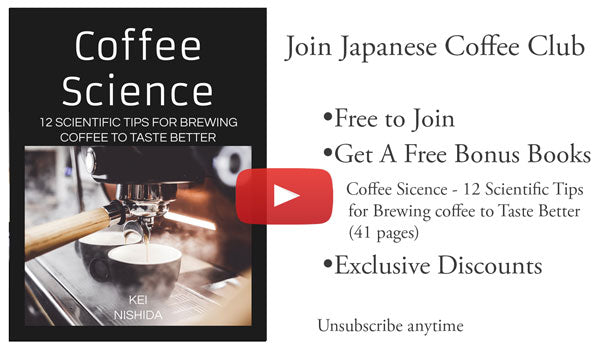
Sign up for free to the Coffee Club to get advice and exclusive articles about how to choose Japanese Coffee, and tips, tricks, and recipes for enjoying Japanese coffee.
About the author
Kei Nishida
Author, CEO Dream of Japan
Certification: PMP, BS in Computer Science
Education: Western Washington University
Kei Nishida is a passionate Japanese tea and coffee connoisseur, writer, and the founder and CEO of Japanese Coffee Co. and Japanese Green Tea Co., both part of Dream of Japan.
His journey began with a mission to introduce the world to the unparalleled quality of Japanese green tea. Through Japanese Green Tea Co., he established the only company that sources premium tea grown in nutrient-rich sugarcane soil—an innovation that led to multiple Global Tea Champion awards.
Building on this success and his passion for Japanese craftsmanship, Kei expanded into the world of coffee, pioneering the launch of Japanese Coffee Co., the first company to bring Sumiyaki charcoal-roasted coffee to a global audience. His dedication to authenticity and quality ensures that this traditional Japanese roasting method, once a well-kept secret, is now enjoyed worldwide.
Beyond tea and coffee, Kei has also introduced Japan’s legendary craftsmanship to the world through Japanese Knife Co., making handmade katana-style knives—crafted by a renowned katana maker—available outside Japan for the first time.
Kei’s journey continues as he seeks out and shares the hidden treasures of Japan, one cup and one blade at a time.
Learn more about Kei


